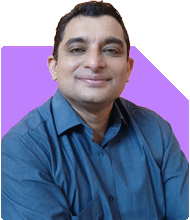Ramalingam Kalirajan |9705 Answers |Ask -Follow
Mutual Funds, Financial Planning Expert - Answered on Jun 23, 2025
He has an MBA in finance from the University of Madras and is a certified financial planner.
He is the director and chief financial planner at Holistic Investment, a Chennai-based firm that offers financial planning and wealth management advice.... more

DOB entered in my LIC Jeevan Shri policy is 02/01/1962 whereas my actual DOB is 02/ 01/1960. All premiums are paid and policy is to mature in January 2027. Will there be any issue at the time of maturity? If yes, what should I do?
Your policy photo shows DOB as 02/01/1962.
Your actual DOB is 02/01/1960.
The policy matures in January 2027.
This mismatch may cause confusion at maturity.
LIC may question your age at entry or maturity.
They may delay or adjust payout.
Potential Problems at Maturity
LIC assesses maturity based on policy date and age.
Incorrect DOB may trigger request for proof.
Verification delays are possible.
It may affect payable amount if age criteria differ.
Claim could be deferred pending correction.
A dispute could arise if underwriting terms vary by age.
Why Timely Correction Matters
Corrections during the policy term are simpler.
At maturity, LIC may demand proof and correction.
That may risk your payout timeline and convenience.
Avoiding delays preserves your financial planning.
Legal and Underwriting Perspective
LIC follows IRDAI norms and standard age documentation.
Update must use original proof like birth certificate, school records, or passport.
Age proof must be valid and consistent with actual date.
What You Should Do Now
1. Immediately Inform LIC
Visit the LIC branch office where policy was sold.
Write an application stating correct DOB.
Attach self-attested original documents:
Birth certificate or school leaving certificate.
Passport, PAN card, or Aadhaar.
2. Submit Application with Proofs
Clearly mention policy number and details.
Ask LIC to correct the DOB in records.
LIC will process under “endorsement and correction” procedure.
3. Follow Up Periodically
Keep a copy of acknowledgment receipt.
Visit branch after 15–30 days to check update status.
Ask for corrected policy document or endorsement certificate.
4. Keep Updated Documents
Once corrected, request updated policy
Ensure your maturity benefit is based on correct age data.
5. Minimise Risk of Dispute
Holding correct documentation reduces maturity time friction.
Avoid last-minute discrepancies causing unnecessary stress.
What Happens if You Don’t Correct Now
LIC may seek age proof at maturity.
Processing may get delayed by weeks/months.
Official payout may be reduced if age mismatch affects sums assured.
You may need to undergo extra paperwork or due diligence at maturity.
Post?Correction Actions
Ensure the corrected policy is reflected in your name.
Keep endorsement letter securely.
Include corrected document in financial plan.
Avoid future insurance or investment mismatches.
Integrating this into Your 360° Financial Plan
Insurance & Policy Governance
Age errors are common but fixable.
Timely correction reduces frustration.
Clean records align better with other investments.
Retirement & Liquidity Planning
January 2027 maturity may fund retirement or goals.
Ensure payout timing works with your plan.
Tax Considerations
Money received will be assessed as per maturity rules.
LIC doesn’t deduct tax at maturity.
But correct documentation avoids classification issues.
Final Insights
Mismatched DOB is fixable without surrender.
Fix it now by submitting application with proof.
Track status to ensure benefits at maturity are unhindered.
Proper documentation aids smooth maturity payout.
You can align this corrected policy with your overall financial plan.
You are proactive in seeking clarity. This action ensures secure maturity benefit and trust in your planning.
Best Regards,
K. Ramalingam, MBA, CFP,
Chief Financial Planner,
www.holisticinvestment.in
https://www.youtube.com/@HolisticInvestment
You may like to see similar questions and answers below
Ramalingam Kalirajan |9705 Answers |Ask -Follow
Mutual Funds, Financial Planning Expert - Answered on May 20, 2024
Ramalingam Kalirajan |9705 Answers |Ask -Follow
Mutual Funds, Financial Planning Expert - Answered on Jan 10, 2025
Milind Vadjikar | Answer |Ask -Follow
Insurance, Stocks, MF, PF Expert - Answered on Jan 23, 2025
Milind Vadjikar | Answer |Ask -Follow
Insurance, Stocks, MF, PF Expert - Answered on May 12, 2025
Milind Vadjikar | Answer |Ask -Follow
Insurance, Stocks, MF, PF Expert - Answered on May 14, 2025
Nayagam P P |8610 Answers |Ask -Follow
Career Counsellor - Answered on Jul 12, 2025
Dr Nagarajan J S K |1736 Answers |Ask -Follow
NEET, Medical, Pharmacy Careers - Answered on Jul 12, 2025
Dr Nagarajan J S K |1736 Answers |Ask -Follow
NEET, Medical, Pharmacy Careers - Answered on Jul 12, 2025
Nayagam P P |8610 Answers |Ask -Follow
Career Counsellor - Answered on Jul 12, 2025
Nayagam P P |8610 Answers |Ask -Follow
Career Counsellor - Answered on Jul 12, 2025
Dr Shakeeb Ahmed Khan |164 Answers |Ask -Follow
Physiotherapist - Answered on Jul 12, 2025
Nayagam P P |8610 Answers |Ask -Follow
Career Counsellor - Answered on Jul 12, 2025
Nayagam P P |8610 Answers |Ask -Follow
Career Counsellor - Answered on Jul 12, 2025
Nayagam P P |8610 Answers |Ask -Follow
Career Counsellor - Answered on Jul 12, 2025
Radheshyam Zanwar |5239 Answers |Ask -Follow
MHT-CET, IIT-JEE, NEET-UG Expert - Answered on Jul 12, 2025






















